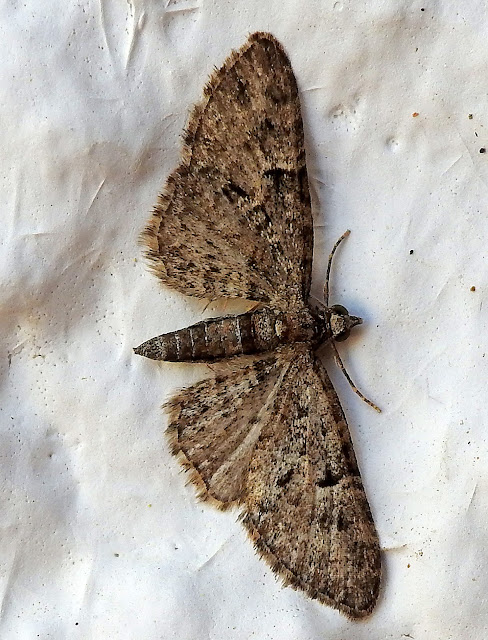This Blog contains Wildlife and Bird Photos from Walks, Safaris, Birding Trips and Vacations. Most of the pictures have been taken with my Nikon P900 and P950X cameras. If you click on the label underneath the picture it will link to all of the photos taken for that species. Just click on any image for a large picture.
TOTAL PAGEVIEWS
TRANSLATE
Tuesday, 10 May 2022
Monday, 9 May 2022
Sunday, 8 May 2022
17-4-2022 MANDINA LODGE, GAMBIA - BLACK HEADED PARADISE FLYCATCHER (FEMALE) (Terpsiphone rufiventer)
17-4-2022 MANDINA LODGE, GAMBIA - MEDIUM EGRET (Ardea intermedia)
The intermediate egret (Ardea intermedia), median egret, smaller egret or medium egret, is a medium-sized heron. Some taxonomists put the species in the genus Egretta or Mesophoyx. It is a resident breeder in southern and eastern Asia.
Some authorities classify the intermediate egret in its own monotypic genus, Mesophoyx, while others place it with the smaller egrets in Egretta.
There were three recognised subspecies, and these are sometimes raised in to species:
A. i. brachyrhyncha Brehm, 1854 "yellow-billed egret" - sub-Saharan Africa
A.i. intermedia Wagler, 1827 "intermediate egret" - Asia from the Russian Far East to Japan to India and the Greater Sundas
A. i. plumifera Gould, 1848 "plumed egret" - eastern Indonesia, New Guinea and Australia.
A.(i.) intermedia differs from A.(i.) brachyrhyncha and A. (i.) plumifera by having a black bill when in breeding plumage, while A.(i.) plumifera has a yellow-and-pink bill and A. (i.) brachyrhyncha has much yellower lores and face. A further difference between this species and the "yellow-billed" species is that the intermediate egret has black at the top of the legs compared to reddish in the yellow-billed egret.
The split of intermediate egret into 3 species was accepted by the IOC on 26 September 2023, this form was given the common name medium egret by the IOC.
Saturday, 7 May 2022
17-4-2022 MANDINA LODGE, GAMBIA - AFRICAN LOCUST BEAN (Parkia biglobosa)
Parkia biglobosa, known in English as the African locust bean, is a perennial deciduous tree in the family Fabaceae. It is found in a wide range of environments in Africa and is primarily grown for its pods that contain both a sweet pulp and valuable seeds. Where the tree is grown, the crushing and fermenting of these seeds constitutes an important economic activity. Various parts of the locust bean tree are used for medicinal and food purposes. As a standing tree, locust bean may have a positive effect on the yield of other nearby crops.
Subscribe to:
Posts (Atom)














%204.jpg)
%205.jpg)




















1.jpg)






